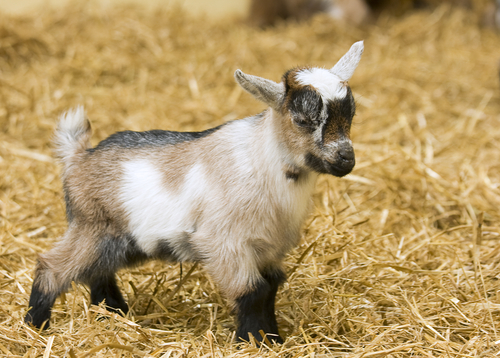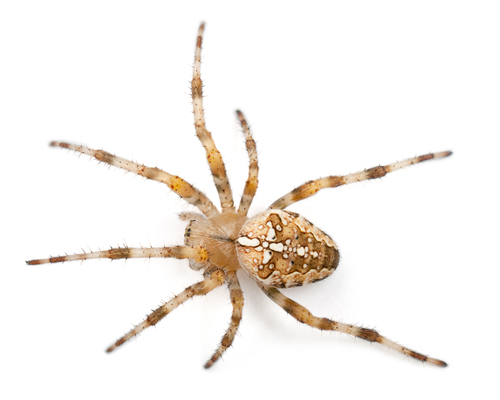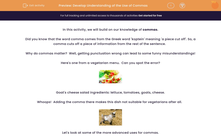In this activity, we will build on our knowledge of commas.
Did you know that the word comma comes from the Greek word 'koptein' meaning 'a piece cut off'. So, a comma cuts off a piece of information from the rest of the sentence.
Why do commas matter? Well, getting punctuation wrong can lead to some funny misunderstandings!
Here's one from a vegetarian menu. Can you spot the error?

Goat's cheese salad ingredients: lettuce, tomatoes, goats, cheese.
Whoops! Adding the comma there makes this dish not suitable for vegetarians after all.

Let's look at some of the more advanced uses for commas.
1. Commas can be used in pairs to separate information from the rest of the sentence, a bit like brackets.

My little brother, who is seven, is having a birthday party tomorrow.
The part cut off by the commas 'who is seven' is extra information. It is not the most important part of the sentence and we call this the subordinate clause.
2. Commas can be used to join compound sentences which use the conjunctions:
For
And
Nor
But
Or
Yet
So
I am planning to bake a cake, so I need to get the ingredients ready.
My bedroom is not very tidy, nor is my brother's.
3. Commas can be used after an adverb at the beginning of a sentence.

Nervously, she approached the spider.
Quietly, I tiptoed past the creature.
In this activity, you will have a go at using commas so if you are ready, let's get started!








